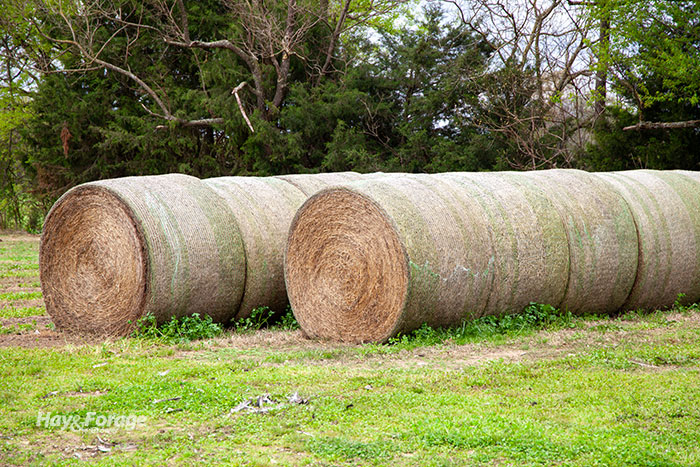
Like refrigerated foods left on the counter, bales stored outside have a greater risk of spoilage. Mark Johnson with Oklahoma State University suggests good hay storage is always important, but controlling spoilage in bales is especially critical in regions where drought conditions hindered forage yields and hiked up the price of hay this year.
Baling hay at a higher density can help reduce oxygen infiltration, and using net wrap instead of baler twine may also mitigate dry matter loss. That said, these measures taken during the haymaking process will only be effective if bales are stored properly for the long run.
The best-case scenario for hay storage is keeping bales in a barn or a similar building. In fact, Johnson notes dry matter losses for round bales kept in a barn up to nine months can be less than 2%, but barn storage isn’t always an option. Although hay that is stored outside will inevitably incur more spoilage, producers can minimize this loss with appropriate site selection, bale orientation, and bale protection.
Location, location, location
Start by choosing a well-drained area to limit the amount of moisture bales can absorb. Johnson suggests using old pallets, fence posts, railroad ties, or tires as a base to keep bales off the ground. A 6-inch layer of coarsely ground rock can also act as a barrier between bales and soil moisture.
“Anything that can be done to maximize drainage and minimize moisture within and around the storage site will be beneficial,” says Johnson, an extension beef cattle breeding specialist.
After selecting a suitable site that is out of the shade, arrange bales end to end in rows that stretch north to south. This will ensure better airflow and exposure to sunlight, which will boost hay drying rates. Johnson also recommends allowing at least 3 feet of space between rows and eliminating vegetation among bales to encourage even more airflow.
Cover the costs
Avoid stacking bales in a triangular formation. This can lead to more spoilage in bales in the bottom levels of the pyramid. If possible, Johnson encourages producers who have already stacked hay this way to reorient bales in single-tiered rows to slow the rate of spoilage that could occur.
Once bales are situated, cover them with a plastic or canvas tarp instead of leaving them unprotected. Although these coverings may not be an expense that was originally factored into the cost of production, it could be one that pays for itself when more dry matter is available for feeding.
“Producers are encouraged to consider the cost-to-benefit ratio of providing this protection,” Johnson asserts. “Factors to consider include the value or hay, projected in-storage losses, local environmental conditions, the cost of providing protection, and how long the hay will be in storage before it is fed.”

